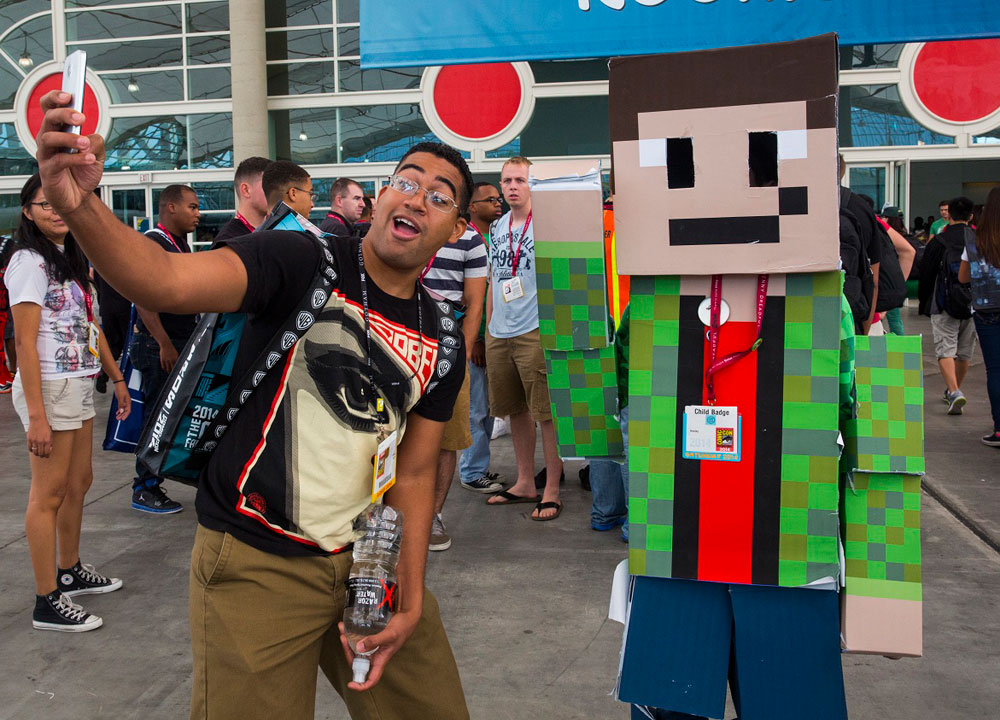
July 11, 2019; San Diego Union-Tribune
Starting tomorrow and continuing through Sunday, Comic-Con—the comics, superhero, and sci-fi extravaganza organized by the nonprofit Comic-Con International—will hold its 50th annual event in San Diego, California. The wildly popular event sold out last November, with all 135,000-plus convention passes distributed via online lottery in less than an hour.
Writing in the San Diego Union-Tribune, Peter Rowe traces the growth of the convention into the institution it is today. Rowe notes that the initial convention, held in August 1970, was called “San Diego’s Golden State Comic Con.” Among its attendees were science fiction authors Ray Bradbury and A.E. Van Vogt, plus Jack Kirby, co-creator of Captain America, the X-Men, and other iconic superheroes. It was attended by 300 people.
As Rowe explains, as it has grown from 300 attendees to essentially taking over downtown San Diego for a weekend, with streets “jammed with Stormtroopers and Klingons, princesses and wizards, the Game of Thrones cast, Samuel L. Jackson, Lin-Manuel Miranda, Thandie Newton, Evan Rachel Wood, Conan O’Brien,” and so on, the convention has had to evolve. While the intimacy of early conventions, where you stood a real chance of having extended one-on-one encounters with famous science-fiction writers and comics creators, has been lost, growth has led to a much wider and more diverse audience at a con curated by a team that includes 50 paid staffers and 3,400 volunteers.
One change has been increased gender diversity. Heavily male in its early years, SDCC now attracts men and women in roughly equal numbers. Mary Fleener, a graphic novel author, tells Rowe that she believes that “60 percent of the people under 30 are women.”
Content is also more diverse. Underground comix pioneer Mary Fleener tells Rowe that the shift began in the 1990s, “as publishers like Drawn & Quarterly and Fantagraphics gave platforms and credibility to a new generation of cartoonists, reflecting the full range of gender, ethnicities, nationalities—welcome, Japanese manga! hello, Korean manhwa!—and political and sexual orientations.”
Sign up for our free newsletters
Subscribe to NPQ's newsletters to have our top stories delivered directly to your inbox.
By signing up, you agree to our privacy policy and terms of use, and to receive messages from NPQ and our partners.
Rowe notes that this year’s conference includes panels on “A Long Story Short: Mexican Comic Books,” “Diversity in Manga,” “Entertainment is LGBTQ,” and “Mormons Making Comics.” And that is just in Thursday’s noon time slot.
In general, though, the shift in audience came first. Last year, Henry Jenkins, Provost Professor of Communication, Journalism, Cinematic Arts and Education at the University of Southern California, observed, “If we are seeing more inclusive representations within popular media franchises, such as the Marvel cinematic universe and Star Wars, it is in part because when the showbiz folks looked out across Hall H, they saw lots of faces of female fans and fans of color. The success of Wonder Woman and Black Panther [was] almost certainly born here.”
Demographic change is not the only driver, though. Influenced by Black Lives Matter and #OscarsSoWhite, convention attendees organized Black Heroes Matter in 2016. Baltimore artist URAEUS, who designed “Black Heroes Matter” t-shirts, noted that the message struck a nerve. Acknowledging that his contribution was a ripple in a social movement that built up over many years, URAEUS observed that the call really was to be true to mission.
It’s what the genre was designed to do—not just to entertain, but to inspire everyday people to seek the heroes within themselves and seek change. We’re tired of riding shotgun or being the sidekick, or being the streetwise character with no book smarts. We’re tired of watching others save the world. We want to see us save the world, regardless of race, gender, or creed.
Last year’s con in 2018 saw the appearance of the first television-based transgender superhero, and also featured Joyce Murchinson Kelly, who at 94 was belatedly acknowledged for her uncredited authorship of many Wonder Woman comics in the 1940s. There remain, however, too many “firsts” in a domain still heavily dominated by white male voices at the top. It was only in 2015 when Aisha Tyler became the first woman of color to host a mainstage “Hall H” panel. It was 2018 when Yvette Nicole Brown became the second woman of color to do so.
“Diversity comes from the bottom,” Tyler told Sonaiya Kelley in the Los Angeles Times last year. She added, “Diversity of representation brings diversity of perspectives, diversity of experience, diversity of storytelling. The core of nerd-dom is about telling extraordinary, unusual, outlier stories. And so, by its very nature nerd culture should be the most inclusive of all popular cultures because it’s made up of people that have been excluded historically. This is a band of outsiders, and that means that all should be welcome.”—Steve Dubb











